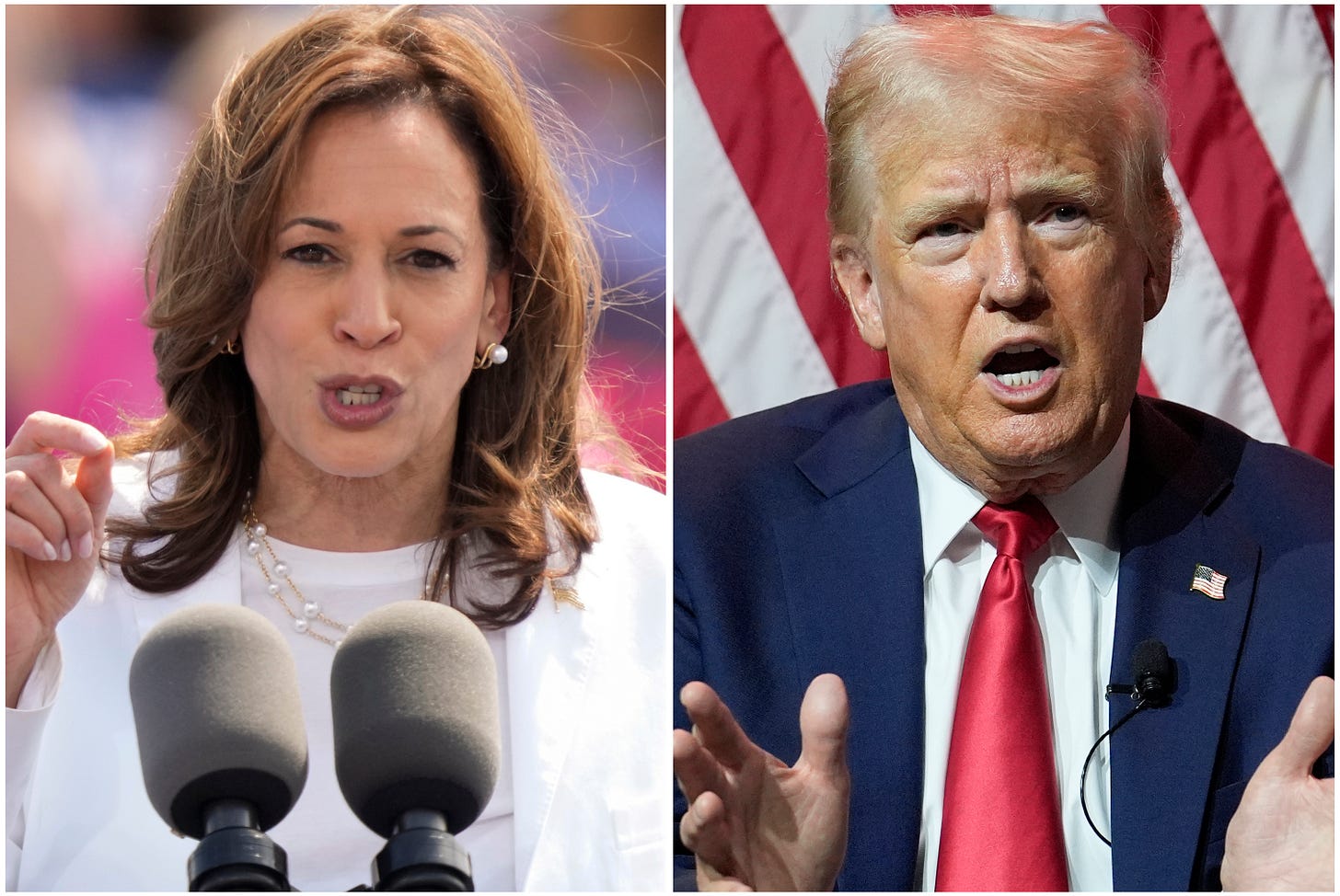Harris slightly ahead in 4 out of 5 Pennsylvania polls released this week
Update: After publiciation of this post, Armchair Lehigh Valley learned of a sixth poll. Released today by Marist College, it showed Harris and Trump tied at 49% each among likely voters. It showed Trump (49%) edges Harris (45%) among independents who are likely to vote.
Five new polls released this week give a window into the presidential race in the key swing state of Pennsylvania with four showing Vice President Kamala Harris ahead of former President Donald Trump and one showing a tied matchup.
A poll of registered voters released today by Franklin & Marshall College found Harris, the Democratic nominee, outpacing Trump, her Republican challenger, 49% to 46%.
It mirrors the poll findings released Monday by USA Today/Suffolk University where Harris was ahead of Trump 49% to 46%.
Harris has a 4 percentage-point lead in a poll released today by The New York Times/Philadelphia Inquirer/Siena College (50%-46%) and she was leading Trump 51% to Trump’s 45% in a Quinnipiac University poll released on Wednesday.
Meanwhile, a Washington Post poll showed Harris essentially tied with Trump (48%-47%) among likely and registered voters.
The poll by Franklin & Marshall College, which is located in Lancaster, Pa., covered Sept. 4 to Sept. 15, a period that partially came after the Sept. 10 presidential debate.
The Franklin & Marshall poll also factored in third-party and undecided voters. It found that 3% still didn’t know who they were voting for while 2% were choosing either Green Party candidate Jill Stein or Libertarian Party candidate Chase Oliver. Of the undecideds, 60% described themselves as independents.
Berwood Yost, director of the Franklin & Marshalls Center for Opinion Research, where the poll was conducted, said the findings of the new polls show Pennsylvania is far from settled.
“I think the consistency in the polls suggests that Harris has a small lead, but that neither candidate has achieved majority support. That means the state is very much in play,” he said.
He went on to say, “The influence that third-party candidates could have on the race also seems to have diminished probably because there are fewer voters who dislike both candidates and because {Robert F. Kennedy Jr.} is not on the ballot.”
Meanwhile, the Franklin & Marshall poll found that U.S. Sen. Bob Casey, a Democrat, leads David McCormick, his Republican challenger, 48% to 40% – a narrower lead than August’s 48% to 36% findings.
That’s vastly different from the Washington Post, which found Casey had a one-percentage point lead (47%-46%) but tied at 48% when third-party candidates are excluded.
The Franklin & Marshall poll surveyed 890 registered Pennsylvania voters, including 399 Democrats, 366 Republicans and 125 Independents. It had a sampling error of +/- 4.1 percentage points.
According to the poll, three in five supporters of each candidate are “very enthusiastic” about supporting them, suggesting that turnout will be a key variable in the final vote tally.
“The balance of regular and less frequent voters will be determinative,” the poll findings said.
Harris leads among those who regularly vote, 51% to 47% while Trump has an advantage among less frequent voters, 47% to 46%.
At the same time, few Pennsylvania voters plan to split their ticket between the presidential and U.S. senate races. Nearly half (47%) of the voters are Harris-Casey voters and two in five (39%) are Trump-McCormick voters. There are a small proportion of Trump-Casey (2%) and Trump-Other (2%) voters and virtually no Harris-McCormick or Harris-Other voters.
The Franklin & Marshall College poll found that concern about the economy (34%), including unemployment and higher gas and utility prices, continues to be the most often mentioned problem facing the state.
Nearly Half (46%) of respondents said they are “worse off” than a year ago, which is similar to how respondents have felt for most of the past several years.
But the number of people who expect to be worse fell from 20% in an August poll to 15%, the lowest reported number since March 2021.
Pennsylvania voters are more pessimistic than optimistic about conditions in the state with about half (48%) reporting the state is “off on the wrong track.”
Still, two in five (41%) believe things are “headed in the right direction,” which is similar to last month and the highest proportion since October 2020.
The survey also includes notable findings about foreign policy issues:
More of the respondents believe that the United States should be less active in world affairs (37%) than more active (16%), although a plurality (41%) believes it should maintain its current level of activity.
Voters are equally divided about providing development and humanitarian aid to the Palestinians. One in three (32%) says the United States is providing too much aid and one in three (31%) says the United States is not providing enough aid.
More of the state’s registered voters believe the United States is providing too much (45%) rather than not enough (20%) economic and military aid to Israel.
Three in five (61%) registered voters in Pennsylvania believe that the United States should provide more or the same amount of military support for Ukraine. One in five believes the United States should provide less military support (19%) to Ukraine and one in seven (15%) wants all military aid withdrawn.
A plurality (48%) of registered voters thinks the United States should devote more resources to controlling immigration at the border, while one in four (26%) believes the United States should devote more resources to addressing the issues that cause migration and one in five (21%) believes it should do both.




